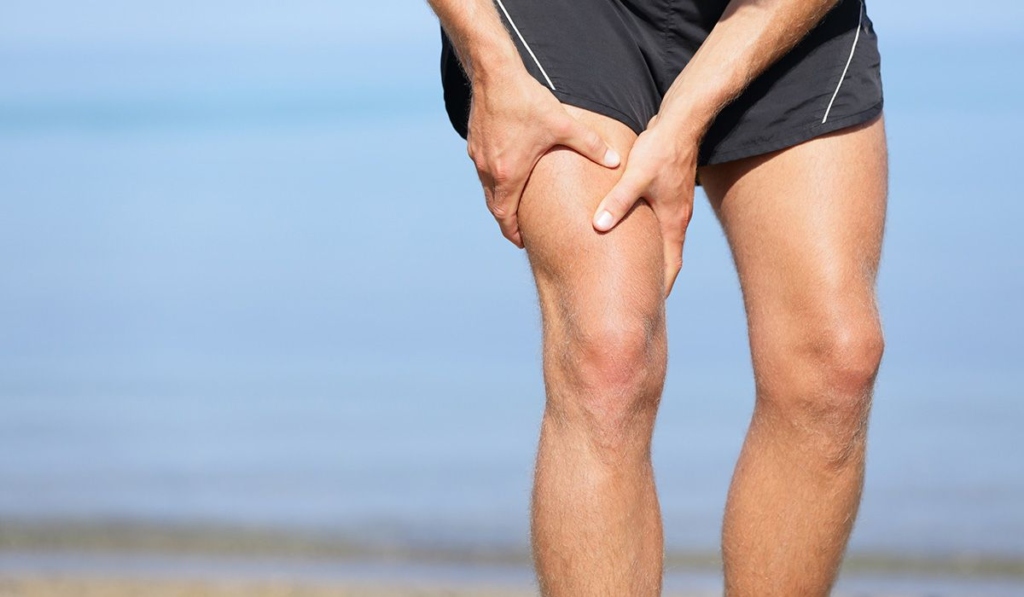Download and print the injury report form here.
Overview
Groin (or adductor muscle) strains are another unfortunate and frustrating soccer injury, accounting for 10-18% of all soccer injuries. This is because of the significant number of forceful side-to-side push-offs, cutting and lateral movements involved in soccer. Adductor strains can also occur when a player is kicking the ball and is met with resistance from their opponent. An adductor muscle strain can occur to one of 5 muscles that make up the adductor group: adductor longus, adductor brevis, adductor magnus, gracilis and pectineus.
Signs and Symptoms
- A sudden sharp pain in the inner thigh or pelvis during exercise
- Pain on stretching the muscle; bringing your leg away from midline
- Pain with contraction / use of the muscle; bringing your leg towards midline
- Possible swelling and bruising depending on the severity
- Tenderness along the muscle belly or where the tendon attaches to the pelvis
Risk Factors
- Previous groin injury
- Imbalance of strength between your hip adductors and abductors; a player is 17 times more likely to sustain an adductor strain if their adductor strength is less than 80% of their abductor strength
- Inadequate warm-up
Initial Treatment
- Rest: avoid use of the injured leg. This is not a “no pain, no gain” situation – avoid painful activities or movements. Crutches main be necessary for the first few days if you are unable to weight-bear
- Ice: 15 to 20min, 4 to 5 times per day for the first 2 or 3 days
- Elevation: if there is swelling, elevate your leg when resting. You can also apply a tensor bandage for compression
- Medication: Advil, Tylenol or Naproxen can be taken to control pain and inflammation – speak with your doctor before taking any medication
- Hydration and nutrition: an anti-inflammatory diet can greatly speed recovery
Consult with your doctor, physiotherapist, chiropractor, osteopath or athletic therapist to help you during the early stages
Return to Sport
As with a hamstring injury, groin strains need extra care and complete rehabilitation before you are able to return to play. The risk of re-injury is high and returning to sport before the body is ready can have a disastrous affect on the rest of your season.
General Criteria
- Full strength without pain
- Full range of motion without pain
- Ablility to perform sport-specific movements at near full speed without pain
Compression shorts or different taping techniques can also help to support the muscles in the early stages after returning to sport. You may find that you need to resume icing after practices or games if there is any soreness afterwards.
Include these exercises in your return to sport program
- Front and side planks
- Lateral lunges and lateral sliding lunges
- Body-weight squats
- Fascial sling stretching
- Dynamic mobility
- Agility training
- Balance and proprioception training
Prevention
General Guidelines
- Adequate warm-up that incorporates dynamic stretching, gradual progression to sport specific movements, progressive running drills, balance and agility training
- Maintaining good hamstring strength and flexibility
- Proper rehabilitation following initial injury
Include these exercises in injury prevention program to minimize your risk of adductor injury
- Dynamic stretching of hip flexors, gluteals, hamstrings, quadriceps and adductors
- Plank variations: front and side planks, rotating planks
- Pelvic bridge variations: double leg, single leg, unstable surfaces
- Lunge variations: windmill lunge, lateral lunge, sliding lunge
References
- Ekstrand, J., M. Hagglund, and M. Walden. “Epidemiology of muscle injuries in profressional football (soccer).” American Journal of Sports Medicine 20 (2011).
- Mtshali, P. TS, N. P. Mbambo-Kekana, A. V. Stewart, and E. Musenge. “Common lower extremity injuries in female high-school soccer players in Johnanesburg east district.” South African Journal of Sports Medicine 21 (2009).
- Brumitt, J. “Eccentric training to reduce hamstring injuries in sprinters.” NSCA’s Performance Training Journal 6: 8-10.

